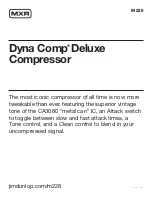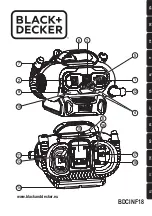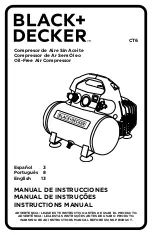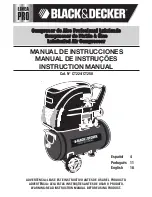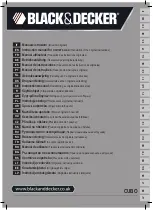
6
Furthermore, it is interesting to note that by comparing the input and output waveforms for the com-
pressed mode, the quietest sections of the input signal have been effectively raised in level, where-
as the loudest sections have been effectively decreased in level. The overall effect is that both ends
of the dynamic range have been pushed toward the middle. This squashing effect of compression is
important to remember and highlights the major difference between compressing and limiting.
Compressing and limiting differ in one more aspect: the dynamic settings for attack and release times.
Attack time is defined as the time taken to for a compressor to respond to program levels which have
exceeded the threshold point. Release time is the amount of time a compressor takes to return the
program level to its original level, after the last excursion over the threshold point. For compression,
a preferably longer attack and release time are generally the best in order to keep the overall output
signal within a specified dynamic range. For limiting applications, considerably shorter attack and
release times are necessary to control fast transient signals or to increase headroom.
To achieve inaudible compression, it is advisable to work with program dependent attack and r elease
times. The advantage of program dependent compression is most apparent when processing musi-
cal material that is varied.
The dbx 160S Stereo Compressor is suitable for all applications because of its ability to be manually
set at both attack and release parameters.
Limiters and PeakStopPlus™
Lower frequencies work best when compressed with slower attack times. When compressing a mix
that includes a wide range of frequencies, a compromise is made when setting the attack time. The
attack setting would generally suit the lowest frequency components of the material. For general
dynamic range control with a compressor, this is of no serious consequence.
However, in a “limiting” situation, where we are restricting the peaks of our signal to a maximum
operating level to avoid distortion in subsequent devices, a slow attack time is not acceptable. This
would result in very fast high frequency signal transients passing through unaffected by gain reduc-
tion. These transients could then cause distortion in the following equipment such as tape recorders
and radio transmitters. It is therefore necessary to choose an attack time which is as close to “zero”
attack as possible, independent of the frequency.
This makes the limiter necessary, and it’s why we include a peak limiter on almost all of our com-
pression products. The dynamics of the dbx limiters are set to handle these fast transients through a
process called PeakStop® and the newer, improved two-stage process called PeakStopPlus®.
The first stage of PeakStopPlus is the Instantaneous Transient Clamp™ which clamps the signal with a soft log-
arithmic clamp function. This logarithmic function assures that the signal will not exceed the level set by the
PeakStopPlus™ LEVEL control by more than 2 dB typically, and that it will not introduce harsh artifacts. The
second stage is a unique program limiter featuring Intelligent Predictive Limiting™. Its function is to monitor
the input signal and intelligently predict the amount of gain reduction needed to keep the output signal below
the ceiling set by the Instantaneous Transient Clamp™. Note, since the PeakStopPlus™ limiter is a fail-safe lim-
iter it must come after the
OUTPUT GAIN
control. If the output gain is set too high as compared to the
160S
Introduction



























